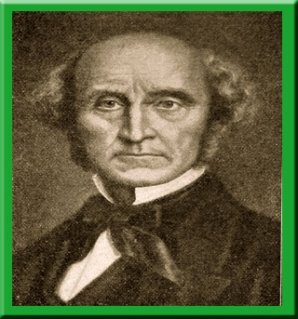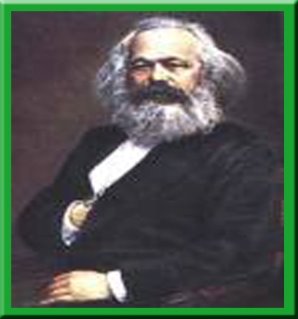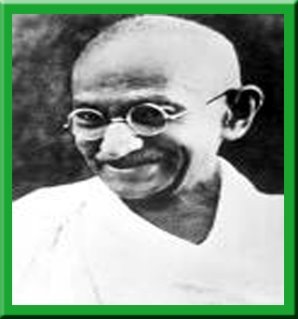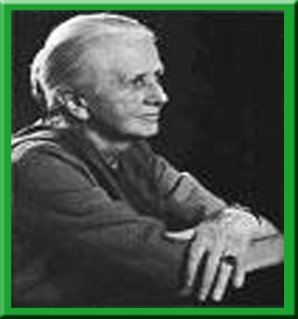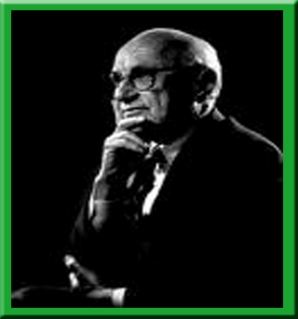After the two World Wars, a coherently defined idea of Europe was emerged. The political, economic and social systems of Western Europe were devastated. The social composition of European societies has transformed since 1950s. The structures of gender and family life has changed. The process towards unity and efforts at governing the European policy have taken place with a high-degree of self-consciousness despite of its diversity. This essay will analyse the major social transformations that have affected and how the EU has responded to these social transformations.
There has been a heated discussion about 'unity and diversity' in most large parts of the world including Europe, Asia, Latin America. However, in other areas except Europe, has arisen after the advent of modernity. The issues about EU were forged in antiquity are revived in modernity. To analyse the major social transformations, the history of Europe should be considered first. Actually, the history of Europe was clearly dominated by the confrontation, war and the efforts to establish clear differences between peoples. Although many scholars argued that the unity of Europe is based on culture and values, there is a strong connection between history and culture. Regarding the European identity, there are two major implications such as a common culture and a common historical past.
Guibernau (2001) points out that a common culture favours the creation of solidarity bonds among the members of a given community and allows them to imagine the community they belong to as separate and distinct from others. Also, a common historical past, including memories of war, deprivation, victory, repression and success, and a common project for the future have reinforced the sense of a shared identity among members of a given community. According to Thompson (1990), culture is the pattern of meanings embodied in symbolic forms, including actions, utterances and meaningful objects of various kinds, by virtue of which individuals communicate with one another and share their experiences, conceptions and beliefs. So it could not differentiate between the culture and the history because the key elements in the culture such as symbols, languages, heroes, legends and traditions, are bound up with the history.
Moreover, the Enlightenment humanism which was emerged in France and the Industrial Revolution which was originated in England and Scotland out a consciously European identity to the fore. In fact, Enlightenment ideas prompted the adoption of rationality as a method and progress. As rationality involved the end of alchemy and magical arguments and fostered a scientific revolution, which culminated in the Industrial Revolution, the social and economic development prompted by the Industrial Revolution, transformed the West and established a radical division between industrializing countries and those primarily based around rural economies such as the most of Central and Eastern Europe. Thus, it is obvious that the process of incipient European Convergence initiated by the Enlightenment was enhanced by the emergence of Industrial Revolution.
After the Second World War, the political systems of Western Europe were devastated while the USA became the strongest military and economic powers. Thus the involvement of USA in Western Europe became crucial in the political, economic and military recovery. In April 1949, the Atlantic Pact was enhanced with the USA, Canada and Western Europe and the North Atlantic Treaty Organization (NATO) was emerged during the early 1950s. This relationship had a large impact upon the Western Europe restructuring aspects on political, economic, military, social and government systems.
During the Cold War, the Europe was divided into two halves and contributed to some sense of unity among the peoples of Western Europe. In 1991, the Cold war was ended and the fall of the Berlin Wall triggered a process of EU enlargement to include countries in Eastern and Central Europe. As a result, the unity of EU was resulted by the shared history with full of the memories of war. The other point to be considered in the shared history was the European Empire. The expansion of the colonies from the fifteenth century onwards was ended after the Second World War and the colonial countries had turned into independent nation-states by the 1960s so that European politics and economics had changed with the signal of the end of 'European Empire'. Most European countries had more emphasized on some institutional agreements.
Another issue that has transformed social compositions of European societies was international migration, that also affects European integration process. As Jenkins argues, integration is not a flattening process of assimilation, but an equal opportunity accompanied by cultural diversity in an atmosphere of mutual tolerance and was cumulatively effected by the decisions made by employers, teachers, doctors and journalists. Also, it is influenced by the decisions of individual immigrants and their associations. The extent of integration depends on the social environment as well as on legislation and public policy.
With the impact of globalisation, the sovereign nation-states are subjected to global markets and international agreements such as the General Agreement on Tariffs and Trade (GATT). As a result, International travel support the large amount of demand from global business, tourism, politics and education. International treaties such as the Schengen Agreement, UN Convention on Asylum and Refugees have a major impact on European integration. Within itself in EU, the approaches to immigration policies are different in practice. Zig Layton- Henry (2001) identified that the British approach has been pragmatic and reactive and has moved from imperial expansiveness and openness to greater restrictiveness and tighten immigration controls. The French approach has been more liberal and Germany has been a reluctant country of immigration. However, all countries have accepted the reality of permanent settlement and all are pursuing polices of integration. Moreover, due to the enlargement of EU in 2004, it could greatly encourage intra-European migration but immigrants increase cultural diversity within the EU and have been subject to social exclusion. The nation state's cultural diversity is grounded on the co-existence of various national and ethnic minorities.
The other ways which divide Europeans include social class, gender and family life. Since 1950s, the structures of gender and family life has changed and these changes include political and social emancipation of women, enfranchisement, access to labor market and the possibility of separating sexual activity from reproduction through birth control techniques. The other major diversity include religion and social-economy diversity. The separation between Eastern Orthodox Christianity and Western variations of Christianity has been crucial in establishing a division between Western and Eastern Europe. Similarly, varying degrees of industrialization and wealth have resulted in the adoption of strong welfare systems in Northern European countries in contrast with the weak and paternalistic welfare models in the South. As Salvador Giner (2001) argues, the great diversity which lies at the heart of the EU leads to the questions about the plausibility of turning on economic and political space generated by a political institution, the EU, into a coherent and governable society.
During the 1970s and 1980s, regional devolution was introduced in France, Spain, Italy, Portugal and Greece and sub-state authorities had become a permanent feature of democratic life in EU by the mid 1980s. Then it became a central role in the implementation of EU policies. For instance, these sub-national vehicles have developed direct foreign relations with EU institutions and have emerged as a political force at the transnational level. These sub-state authorities have worked with the commission to establish new cross-regional associations and cross-border association agreements gained legal recognition in 1989. This could help nationalists to become Euro-regionalists. When Spain joined the EU in 1986, Basque and Catalan nationalists became enthusiastic Euro- regionalists. Lindsay (1991) claimed that sub-state regionalists and nationalists have used integration to imbue their message with an 'internationalist vision'.
Furthermore, these sub-state pressures are complemented by increased involvement in transnational social movements. They are capable of posing a democratic alternative to increased transnational economic integration. Sakamoto (1996) argued that many social movements offer a means of linking with democratizing pressures beyond the immediate EU region which embodied in a range of proactive global movements that challenge the social and development costs of economic globalisation. These social movements include environmental groups (European Environmental Protection Agency), labour and trade union groups (European Trade Union Confederation), Women groups (European Network of Women), lesbian and gay movements, anti-racist movements and Pan-European security organizations.
Most of these movements challenge national divisions both in the EU and beyond it. Generally, these represent both participatory and democratic and forced to the margins of EU decision-making. Accordingly, all social movements are orientated to transnational ideals that have an inherent mobilizing potential at the EU level. Tarrow (1994) argues that a dialectical relationship has emerged between bureaucratic and business elites and social movement 'challengers'. These challengers are powerful vehicles for democracy in an increasingly transnationalized EU. Furthermore, Goodman (1997) argued that re-democratization beyond the nation-state, to a new 'cosmopolitan democracy' emerged out of transnational mobilization and the workings of Pan-EU institutions, national assemblies, sub-state authorities and social movements point the way to a reconstituted democracy that flows through and beyond the state to match the transnational constituencies emerged from increased globalisation.
In fact, the EU has become a new ground of struggles as communities, collectivities and organizations seek to construct or pursue their own identities, lifestyles and values, while national governments, the EU and other public agencies seek to exert varying degrees of social control. The two dimensions of governance, self-organizing governance from below (bottom-up governance) and regulations from above (top-down governance) interact and combine in distinctive ways in different situations within the EU. In the late twentieth century, there were such changes in the social structure that opened up opportunities for other kinds of cultural identification with different political values. The shift toward less organized forms of production, more mobile workforces and flexible working practices had an impact on the fragmentation of class identity and the dispersion of the members of such working communities upon which collective action was based. Thus social movements represent as the products of changes in the social and economic structure of European societies.
Moreover, the growing affluence, improvement in education and growth of equal opportunities also shifted attention away from economic objectives and the quantitative measurement of human welfare toward new post-materialist goals or values, as argued by J. Smith (2001). In post-war European societies, a progress towards a less impersonal and more humanitarian social order has emerged and a society where ideas are more important than money has developed. People mobilize resources in support of their goals. As soon as they recognize the injustice involved in the issue with which they are concerned, people organize themselves, raise funds and mobilize people for direct action. In terms of public policies, as Baker comments, people tend to have a desire for greater accountability, transparency and participation in decision-making institutions as opposed to the bureaucratic formal top-down political institutions. As a result, social movements and actions such as European Social Forum (ESF), Action for Solidarity, Equality, Environment and Development (ASEED) and environmentalist initiatives were emerged.
J. Smith (2001) points out the shifting patterns of governance at national and European levels regarding the decline of unions and the rise of environmental movements within European societies since 1950s. Due to its involvement in top-down governance carried the price of becoming more formal and less accountable to union members, unions became increasingly divided between officials and rank-and-file members, leading to the decline of influence in political institutions and parties. In contrast, the new environmental movements emerged after 1950s, sought to change public opinion and transform relationships in civil society rather than being integrated into public-policy making bodies. At the same time, the EU and national governments seek to exert greater control to realize objectives agreed upon by political representatives and civil servants across Europe. Nevertheless, attempts to develop environmental policies in a cohesive way have arisen along with the emergences of environmental policy making and environmental social movements.
Throughout the history, wars, religious and ideological conflicts, massive economic imbalances and a network of sovereign states thriving on mutual hostility have divided Europeans for a very long times and the essence of the grave. However, there has an effective effort being made by contemporary Europeans toward the establishment of a society with worth of the civilization and the best traditions of the history since 1950s under a coherently defined idea of Europe and the EU has responded to the transformations of the social composition of European societies in the process towards unity despite of its diversity.
Khin Ma Ma Myo (2004)
References
Baker, S. (2001) 'Environmental governance in the EU', in Thompson, G. (ed.) Governing the European Economy, Sage, London
Guibernau, M. (2001) 'Unity and Diversity in Europe' in Guiberbau, M. (ed.) Governing European Diversity, Sage, London
Giner, S. (2001) 'One Europe? The democratic governance of a continent', in Guiberbau, M. (ed.) Governing European Diversity, Sage, London
Jenkins, R. (1967) Essays and Speeches, London, Collins
Layton-Henry, Z. (2001) 'Migrants, Refugees and Citizenship', in Guiberbau, M. (ed.) Governing European Diversity, Sage, London
Smith, J. (2001) 'Social Movements in Europe: The rise of environmental governance', in Guiberbau, M. (ed.) Governing European Diversity, Sage, London
Thompson, J. (1990) Ideology and Modern Culture, Cambridge, Polity Press
ဘေလာ့ လိပ္စာသစ္သို႕ ေျပာင္းေရႊ႕ျခင္း
(၂၀၀၇) ခုႏွစ္မွစ၍ ဘေလာ့စာမ်က္ႏွာအား ဖြင့္လွစ္ခဲ့ရာ ဖတ္ရွဳအားေပးၾကေသာ စာဖတ္ပရိသတ္အေပါင္းအား အထူးပင္ ေက်းဇူးတင္ရွိပါသည္။
ယခုအခါတြင္ ဘေလာ့ကို ဖြင့္ရန္ အခ်ိန္ၾကာျမင့္မွဳမ်ား ရွိေနေၾကာင္း၊ စာဖတ္သူအခ်ိဳ႕မွ အေၾကာင္းၾကားလာပါသျဖင့္ www.khinmamamyo.info တြင္ စာမ်က္ႏွာသစ္ကို ဖြင့္လွစ္ထားပါသည္။
စာမ်က္ႏွာသစ္တြင္ အခ်ိဳ႕ေသာ စစ္ေရး၊ ႏိုင္ငံေရး၊ စီးပြားေရး၊ ပညာေရး၊ က်န္းမာေရးဆိုင္ရာ ေဆာင္ပါးမ်ားႏွင့္ ရသစာစုမ်ား (ႏွစ္ရာေက်ာ္ခန္႕)ကိုလည္း က႑မ်ားခြဲ၍ ျပန္လည္ေဖာ္ျပထားပါသည္။
ယခုဘေလာ့စာမ်က္ႏွာကို ဆက္လက္ထားရွိထားမည္ျဖစ္ေသာ္လည္း ယေန႕မွစ၍ ပို႕စ္အသစ္မ်ား ထပ္မံ တင္ေတာ့မည္ မဟုတ္ပါေၾကာင္းႏွင့္ ပို႕စ္အသစ္မ်ားကို စာမ်က္ႏွာသစ္တြင္သာ တင္ေတာ့မည္ျဖစ္ပါေၾကာင္း ေလးစားစြာ အသိေပး အေၾကာင္းၾကားပါသည္။
စာမ်က္ႏွာသစ္သို႕ အလည္လာေရာက္ပါရန္ကိုလဲ လွိဳက္လွဲစြာ ဖိတ္ေခၚအပ္ပါသည္။
ေလးစားစြာျဖင့္
ခင္မမမ်ိဳး (၁၇၊ ၁၀၊ ၂၀၁၁)
www.khinmamamyo.info
ယခုအခါတြင္ ဘေလာ့ကို ဖြင့္ရန္ အခ်ိန္ၾကာျမင့္မွဳမ်ား ရွိေနေၾကာင္း၊ စာဖတ္သူအခ်ိဳ႕မွ အေၾကာင္းၾကားလာပါသျဖင့္ www.khinmamamyo.info တြင္ စာမ်က္ႏွာသစ္ကို ဖြင့္လွစ္ထားပါသည္။
စာမ်က္ႏွာသစ္တြင္ အခ်ိဳ႕ေသာ စစ္ေရး၊ ႏိုင္ငံေရး၊ စီးပြားေရး၊ ပညာေရး၊ က်န္းမာေရးဆိုင္ရာ ေဆာင္ပါးမ်ားႏွင့္ ရသစာစုမ်ား (ႏွစ္ရာေက်ာ္ခန္႕)ကိုလည္း က႑မ်ားခြဲ၍ ျပန္လည္ေဖာ္ျပထားပါသည္။
ယခုဘေလာ့စာမ်က္ႏွာကို ဆက္လက္ထားရွိထားမည္ျဖစ္ေသာ္လည္း ယေန႕မွစ၍ ပို႕စ္အသစ္မ်ား ထပ္မံ တင္ေတာ့မည္ မဟုတ္ပါေၾကာင္းႏွင့္ ပို႕စ္အသစ္မ်ားကို စာမ်က္ႏွာသစ္တြင္သာ တင္ေတာ့မည္ျဖစ္ပါေၾကာင္း ေလးစားစြာ အသိေပး အေၾကာင္းၾကားပါသည္။
စာမ်က္ႏွာသစ္သို႕ အလည္လာေရာက္ပါရန္ကိုလဲ လွိဳက္လွဲစြာ ဖိတ္ေခၚအပ္ပါသည္။
ေလးစားစြာျဖင့္
ခင္မမမ်ိဳး (၁၇၊ ၁၀၊ ၂၀၁၁)
www.khinmamamyo.info
Unity and Diversity: How the EU has responded to social transformations in Europe since 1950s (Essay)
Saturday, September 4, 2010
Posted by
Khin Ma Ma Myo
Labels:
အက္ေဆးမ်ား


























